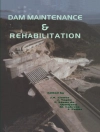The basic principles guiding sensing, perception and action in bio systems seem to rely on highly organised spatial-temporal dynamics. In fact, all biological senses, (visual, hearing, tactile, etc.) process signals coming from different parts distributed in space and also show a complex time evolution. As an example, mammalian retina performs a parallel representation of the visual world embodied into layers, each of which r- resents a particular detail of the scene. These results clearly state that visual perception starts at the level of the retina, and is not related uniquely to the higher brain centres. Although vision remains the most useful sense guiding usual actions, the other senses, ?rst of all hearing but also touch, become essential particularly in cluttered conditions, where visual percepts are somehow obscured by environment conditions. Ef?cient use of hearing can be learnt from acoustic perception in animals/insects, like crickets, that use this ancient sense more than all the others, to perform a vital function, like mating.
Table des matières
Systems.- Perception for Action in Insects.- Principles of Insect Locomotion.- Low Level Approaches to Cognitive Control.- Cognitive Models.- A Bottom-Up Approach for Cognitive Control.- Mathematical Approach to Sensory Motor Control and Memory.- From Low to High Level Approach to Cognitive Control.- Complex Systems and Perception.- Software/Hardware Cognitive Architecture and Experiments.- New Visual Sensors and Processors.- Visual Algorithms for Cognition.- SPARK Hardware.- Robotic Platforms and Experiments.












